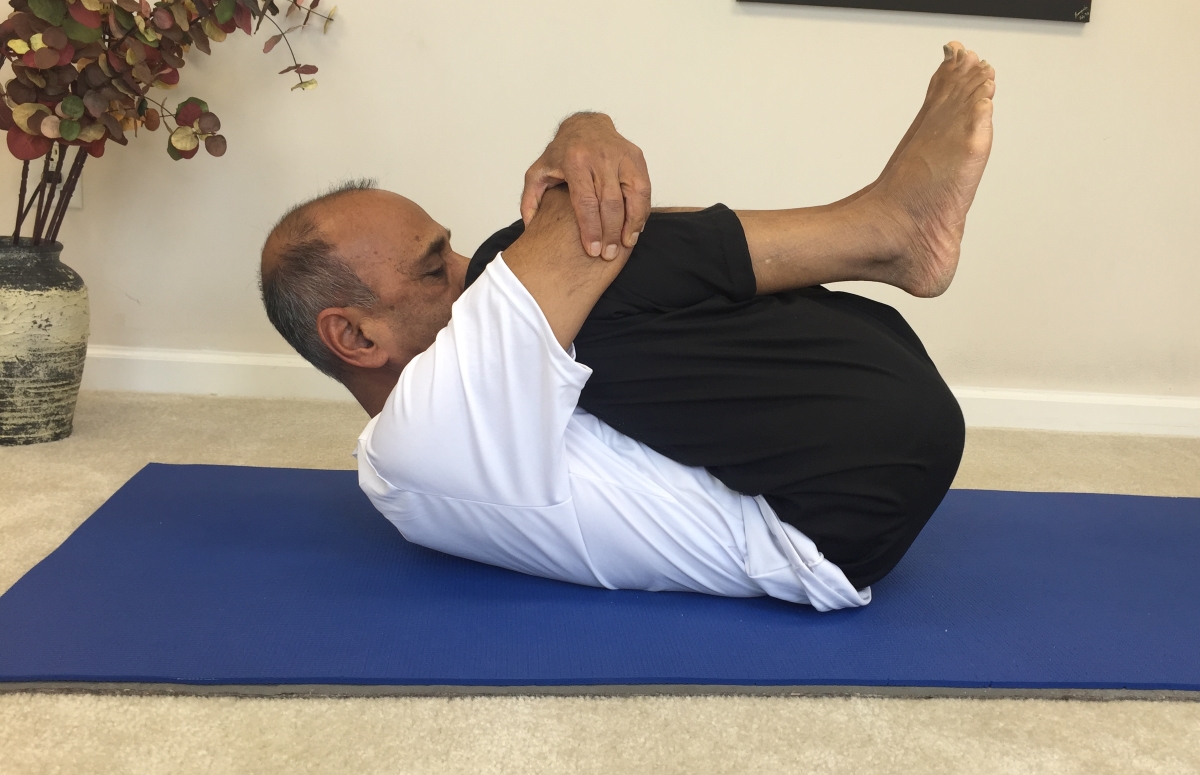
Pawana Muktasana
Pawana-muktasana (PMA) – पवनमुक्तासन –
The name of the asana is a composite of two words – pawana means the wind or air and mukta means liberated or released. So, the common English translation for the pose is "Wind releasing pose".
I hope you will enjoying practicing with me with this video sequence.
Step-by-step
Bending one knee at a time
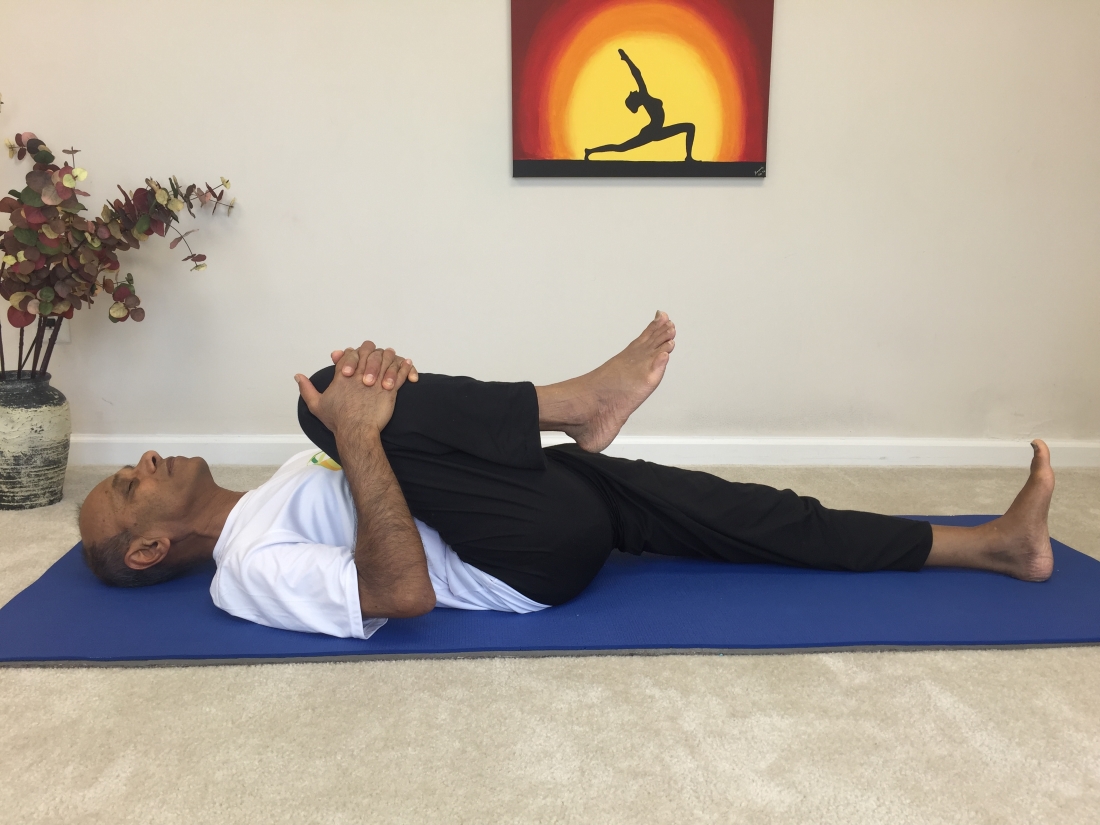
- Lie down on your back in Shavasana for a few breaths.
- Fold the right knee. Lifting the right foot up, hold the right shin with the two hands.
- While exhaling, gently begin to pull the knee toward the chest.
- In a conscious effort to round the spine, if it doesn’t bother your neck, lift the head up and lower the chin down to the chest. Now, without actively pulling the knee down, just guide the knee gently close to the forehead with the hands.
- Inhaling, lower the head down.
- Repeat steps 2, 3 and 4 for two more deep breaths.
- With the next exhalation, when you bring the knee up close to the forehead, stay in the final position for 4-5 breaths.
- With the next inhalation, bring the head and the leg down.
- Relax in Shavasana for a couple of breaths.
- Repeat the above sequence with the other leg.
- Relax in Shavasana for a few breaths.
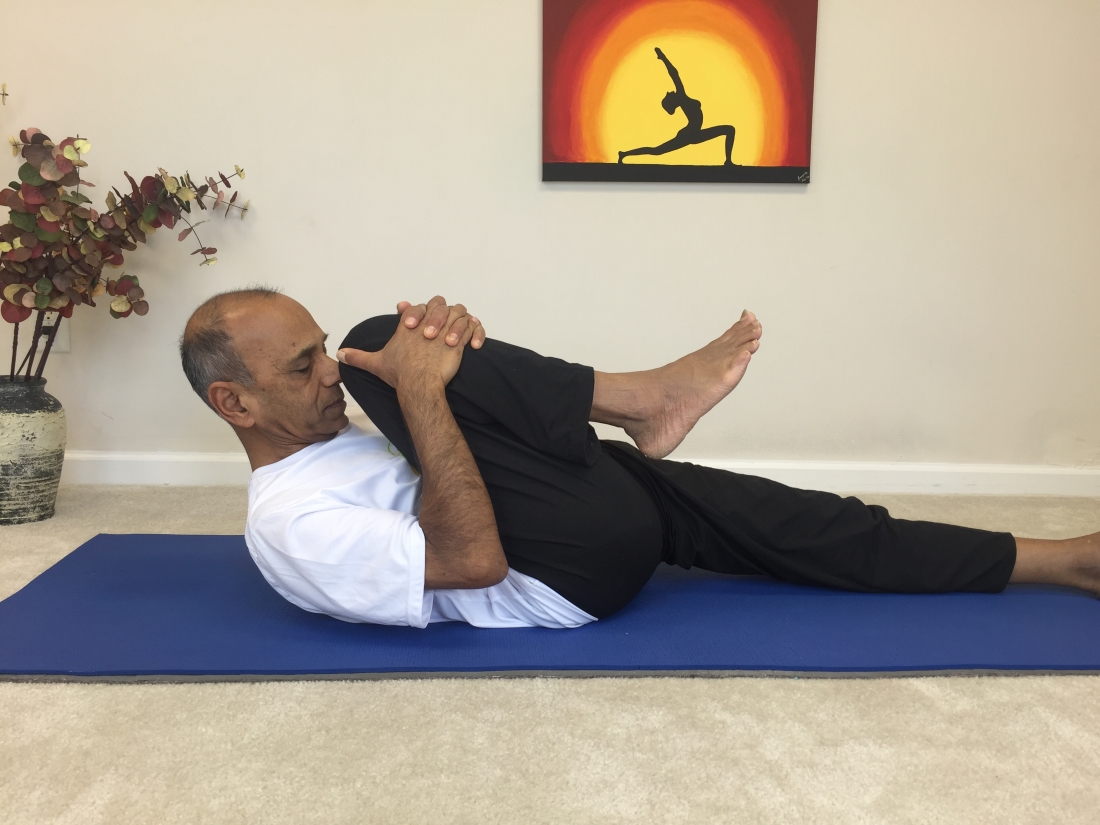
Figure-4 stretch
- Bending both the knees, bring the feet close to the buttocks.
- Lift the right foot and place the top of the foot on the left thigh. Try to slide the foot all the way down to the thigh joint.
- Now lift the left foot up and hold the shin with the two hands.
- In a conscious effort to round the spine, if it doesn’t bother your neck, lift the head up and lower the chin down to the chest. Now, without actively pulling the knee down, just guide the knee gently close to the forehead with the hands.
- Slowly, while inhaling bring the leg and the head down.
- Next time when you bring the knee close to the forehead on the exhalation, try to stay in the final position for about 4-5 breaths.
- With the next inhalation, bring the head down, knee down and rest for a couple of breaths.
- Next, slide the right foot all the way up the thigh and position it on top of the left knee. Thread the right hand from under the leg and then hold the left shin with the two hands.
- Repeating as above, while inhaling lift the head up lowering the chin down to the chest, and try to guide the knee close to the forehead.
- Stay in this position for 4-5 breaths.
- On the next exhalation, release the head and the knee down. Relax for a couple of breaths.
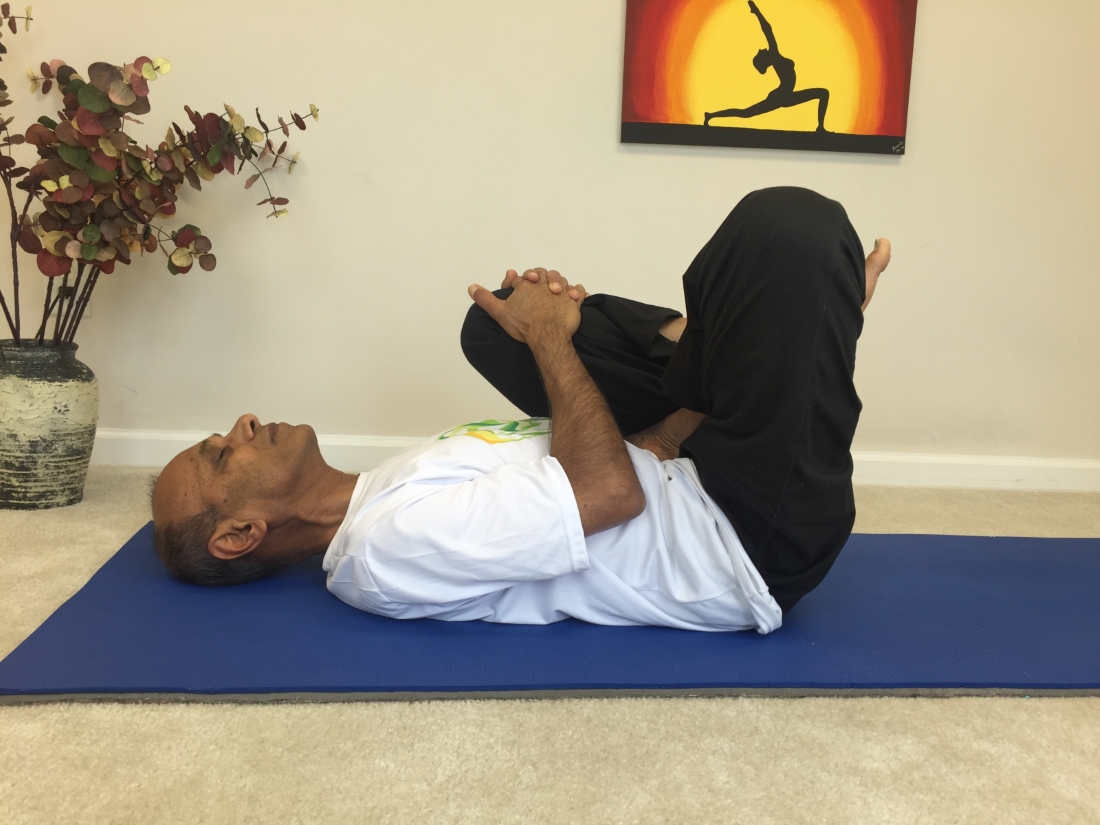
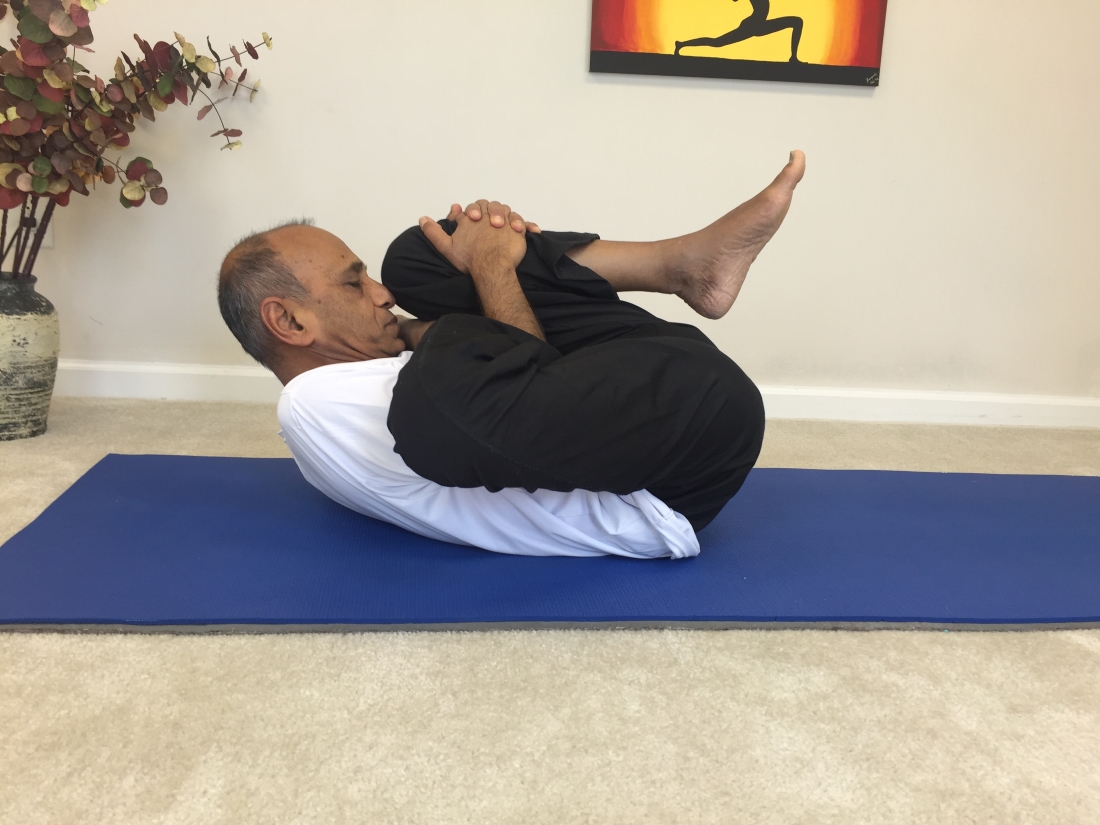
Hamstring stretch with the leg vertical
- Now, still keeping the right foot on the left knee, hold the back of the left thigh with the two hands and stretch the left leg up to a vertical position. While the leg is up vertical, try to curl the toes down toward you while pushing the heel away from you. This will deepen the stretch on the back of the leg.
- Lift the head up, lowering the chin down to the chest, try to guide the left leg closer to the forehead. In this position, try to keep the left leg as straight as comfortable. Feel free to bend the knee slightly if it begins to bother the hamstring or any part of the leg.
- Hold the final position for a couple of more breaths and then slowly release the head down and bring the leg to the ground. Relax for a couple of breaths.
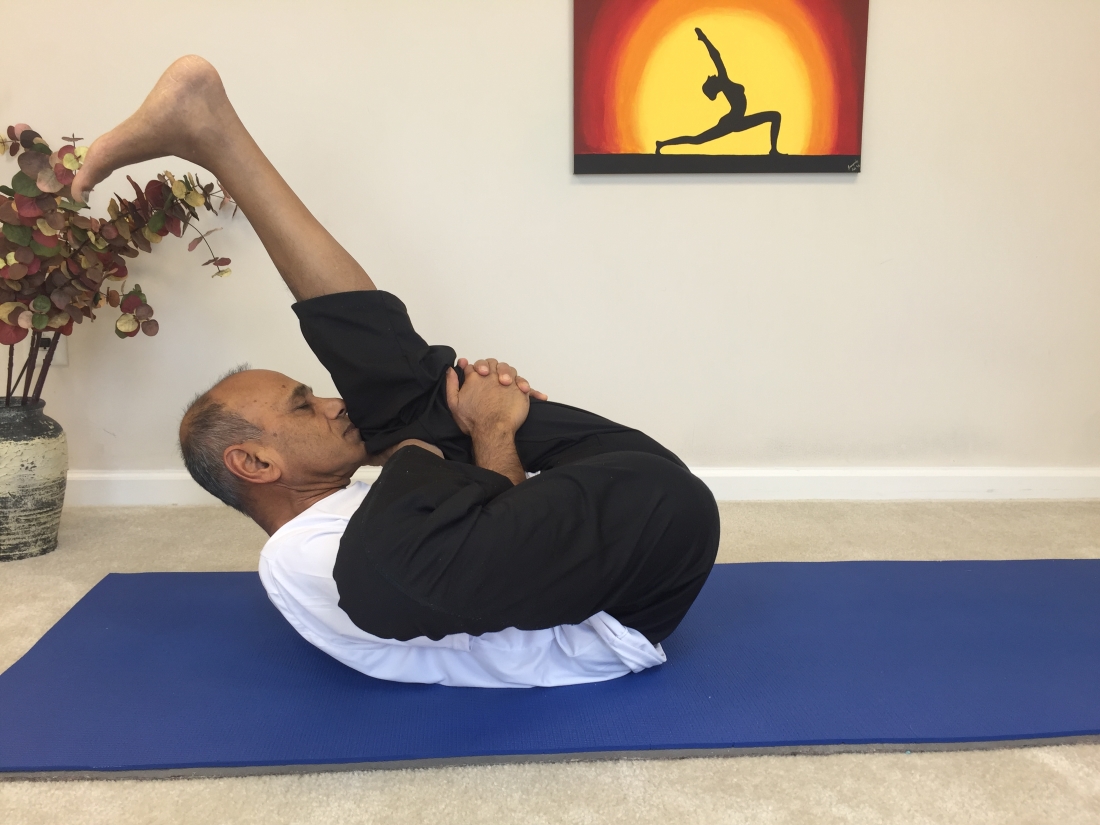
Now switch sides and repeat the Figure-4 stretch and the hamstring stretch by placing the left foot on top of the right thigh.
Rest in Shavasana for a few breaths.
To release any tension from the neck muscles, while resting in Shavasana, gently roll the head from side to side a few times. This should help relax the neck muscles.
Finally, relax in Shavaana for a few more breaths.
Bending both knees together
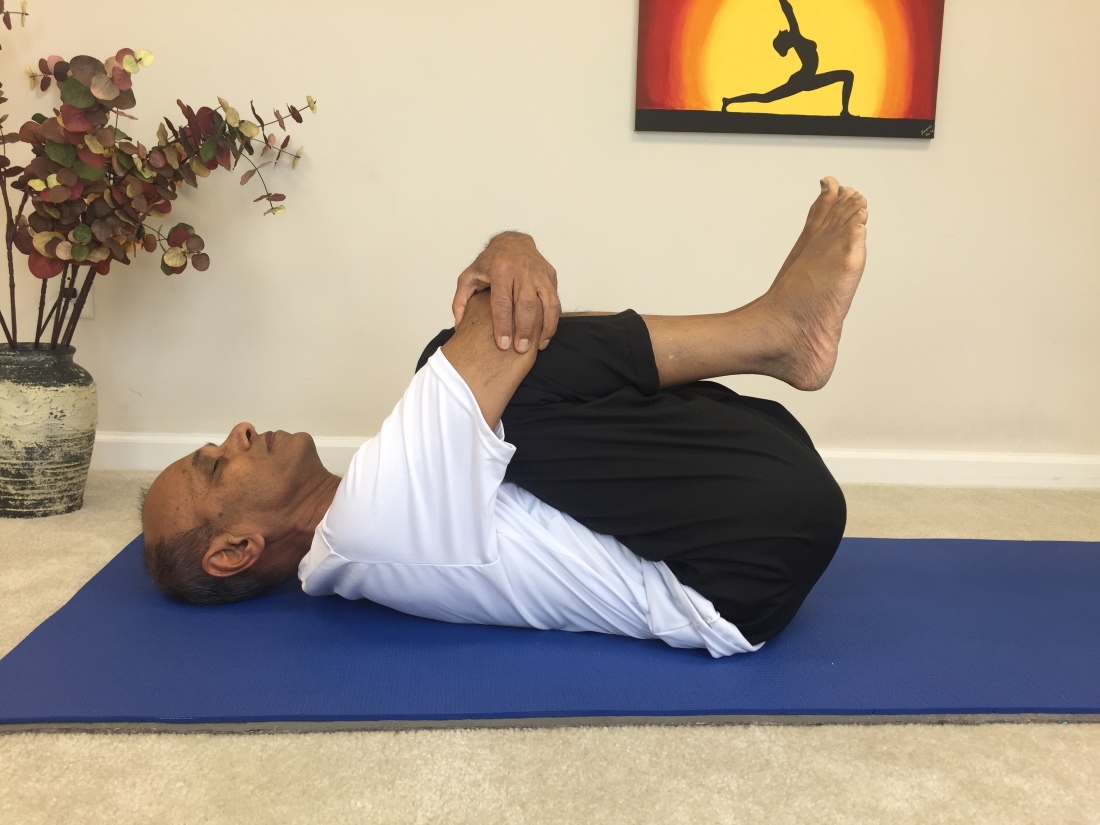
- Now fold both the knees. Lift the feet up and wrap the arms around the knees gently hugging the knees to the chest.
- While exhaling, gently begin to guide the knees toward the chest.
- In a conscious effort to round the spine, if it doesn’t bother your neck, lift the head up and lower the chin down to the chest. Now, without actively pulling the knees down, just guide the knees gently close to the forehead with the hands.
- Inhaling, lower the head down.
- Repeat steps 2, 3 and 4 for two more deep breaths.
- With the next exhalation, when you bring the knees up close to the forehead, stay in the final position for 4-5 breaths.
- With the next inhalation, bring the head and the legs down.
- Relax in Shavasana for a few breaths.
Benefits
- Pawana-muktasana expels the gases trapped in the digestive tract and the large intestines.
- It will help relieve the symptoms of indigestion, flatulence, stomach acidity, constipation, belching, and gases in the colon.
- Massages the whole back, improves the flexibility and blood supply to the entire spine.
- Stimulates kidney function.
- It massages the internal organs – liver, pancreas, intestines etc. and improves their function.
- Very helpful in strengthening the core muscles, flattening the stomach area.
- Enhances blood circulation in the hip joints.
- Brings about a healthy appetite.
Contraindications and precautions
- Avoid practicing Wind-Relieving Pose (Pawanmuktasana) if you are suffering from hyperacidity, hernia, slip disc, menstruation, neck and back problems, and during pregnancy.
- Use no force to bring the knees close to the chin.
- If you suffer from neck pain or lower back pain, do not lift the head up. Instead, keep the tail bone firmly on the ground and try to bring the knees close to the chest. This will provide great relief to the lower back.
- After PMA, a gentle sideways roll of the body will also provide relief to the spine.
Recent Comments